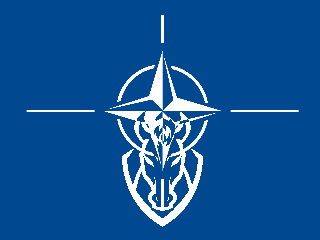N.E.G.I.H.T.O. Alliance
General Information
Initial Signatories (Effective 14 Decemus, 1002 C.S.):
-Kingdom of Equestria
-Kingdom of Ambleon
-Kingdom of Prance
-Kingdom of Germaneigh
-Empire of Roam
-Kingdom of Poleland
-Empire of Neighpon
-Kingdom of Cowrea (South Cowerea) [Member expelled]
Additional Signatories:
-Crystal Kingdom (9 Quartus, 1003 C.S.)
-Republic of Canida (9 Sextus, 1003 C.S.)
-Kingdom of Navarre (9 Septimus, 1004 C.S.)
-Principality of Vulpesylvania (2 Noneus, 1004 C.S.)
-Griffon Kingdom (10 Noneus, 1004 C.S.)
The general articles of alliance for the North Equus Independent Group of Herds Treaty Orgnaization can be broken down into a few specific categories:
MUTUTAL DEFENSE
All signatories promise to provide full and complete support to all other signatories when the articles of alliance are activated. The Member that activates the alliance has overall strategic control of the incident in which the alliance was activated, and may request specific signatories to provide only certain things in support, instead of full and immediate mobilization on a total war footing.
In pursuant to the concept of mutual defense, if a signatory nation initiates conflict as the aggressor, they must explain why they have done so, and the NEIGHTO members must then vote whether or not this act was justified, if the nation initiating the conflict requests aide. If it is deemed justified, the articles of alliance are activated as normal. If not, individual nations may provide whatever support they wish, or none at all.
STANDARDIZATION OF ARMS
Specific items must be standard across all nations. This includes the magazine catch and fitment of all primary rifles, sub-machine guns, and ejecting tube shotguns. This does NOT include handguns. This does include commonality of ammuniton - any ammunition produced by any member nation must be compatible with the arms of all signatories. Specialized ammunition for specific circumstances is permitted, even encouraged, but it must still be usable among all weapons of the same type.
This commonality extends to land warfare vehicles. Specific calibers of ammunition must be universally compatible, even if the weapon systems that use those calibers are mounted on different classifications of vehicles. For example, all 40mm ammunition must be usable across all forces, but there is no requirement that 40mm arms be mounted only on specific classes of combat vehicle.
Naval gun calibers remain outside standardization, excepting "small caliber" (under 80mm) guns, autocannon, and machine guns.
STANDARDIZATION OF RANK SYSTEMS
So that all personnel in the field understand the seniority of other officers and enlisted personnel present, rank systems must have universal compatibility. Even if certain ranks are never used internally by member nations (i.e. Warrant Officers), the rank and rank structure must exist.
Different nations will develop levels of responsibility differently. This is perfectly acceptable, so long as it's understood that personnel of superior substantive rank will still have seniority over other personnel of superior billet. For example, a Major commanding a Regiment is still inferior in rank and must take lawful orders from a Colonel commanding a Company.
ORDER OF COMMAND
Besides standard rank affiliation, personnel of equal substantive rank determine whom is in command by their location. The host nation/location will always have seniority. In situations where personnel of equal substantive rank are in a third nation or location, seniority goes first to personnel from the signatory nation that requested the alliance be activated, and second to time in rank if neither personnel are from said nation. If both personnel of equal substantive rank are likewise equal in time-in-rank, seniority goes to the personnel who's lowest ranked soldier has the LEAST total time in service, if the two personnel cannot otherwise agree on leadership.

